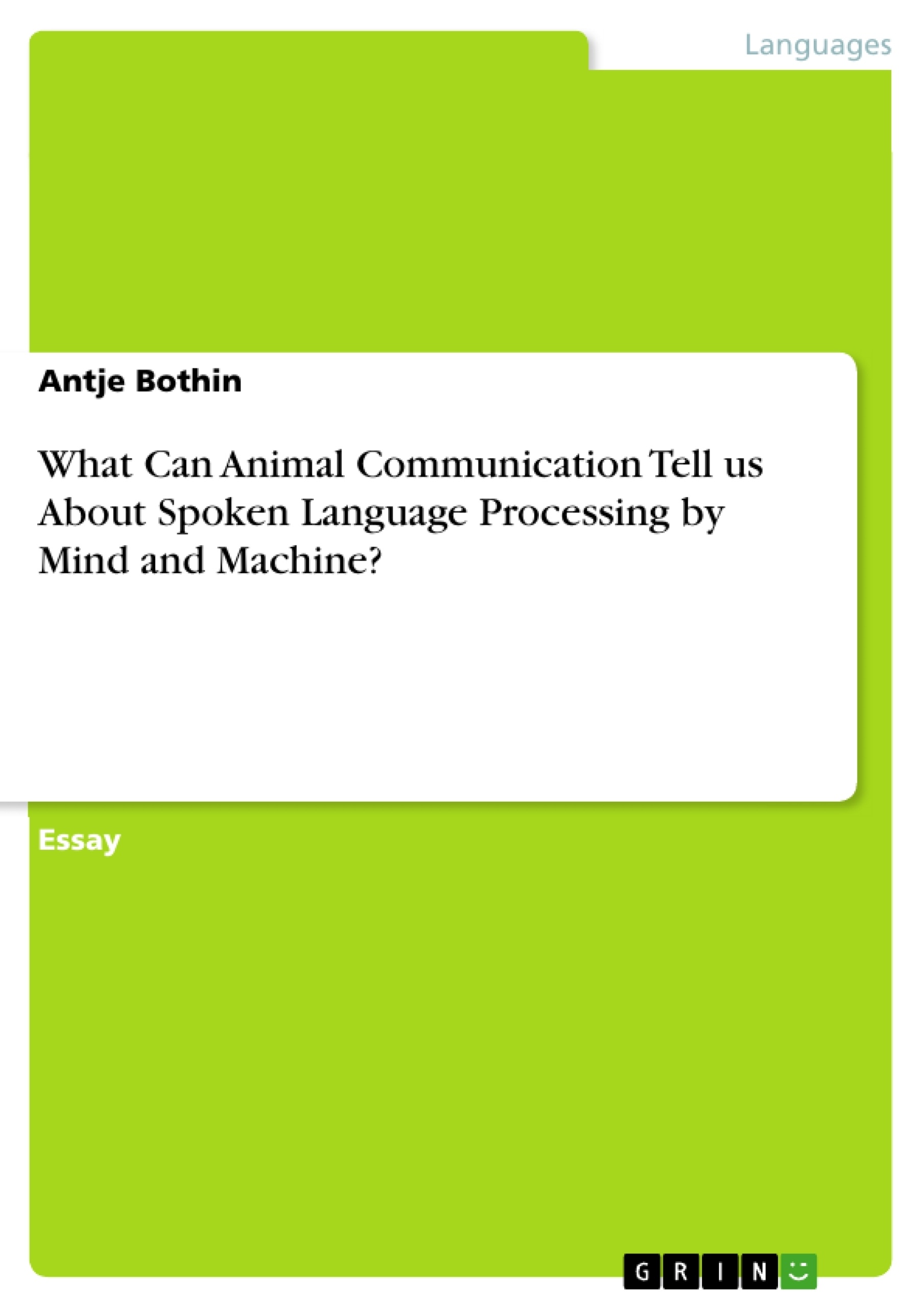In this essay, it is described what animal communication can tell us about spoken language processing by mind and machine. First, it is explained how animal behaviour influences the human side. Then it is shown what can be learnt on the machine side. In conclusion, it can be said that the study of animal communication provides scientists with clues for creating theories of human speech evolution. However, more research in the future is necessary to underpin these theories. A number of questions still remain unsolved. The same is true on the machine side for the development of applications that copy animal techniques.
Inhaltsverzeichnis (Table of Contents)
- Abstract
- Introduction
- Spoken Language Processing by Mind
- Speech Evolution
- Spoken Language Processing by Machine
- Imitation and Adaptation
- Conclusion
- References
Zielsetzung und Themenschwerpunkte (Objectives and Key Themes)
This essay aims to investigate the insights animal communication offers regarding spoken language processing in both humans and machines. The work explores how animal behavior influences human speech evolution and examines what lessons can be learned from animal communication for the development of speech-based machine applications.
- The evolution of speech and its origins in animal communication
- The role of anatomical features in speech production
- The functions of spoken language and animal communication systems
- The use of animal models for studying speech processing
- The challenges and potential of artificial intelligence in replicating speech capabilities
Zusammenfassung der Kapitel (Chapter Summaries)
- Abstract: Briefly outlines the essay's focus on animal communication's contribution to understanding spoken language processing in both humans and machines. It highlights the exploration of both human and machine perspectives and acknowledges the need for further research.
- Introduction: Introduces the complexities of human brain function and the unique nature of human language. It contrasts human language with animal communication and highlights the limitations of current machine speech processing capabilities. The chapter emphasizes the potential of studying animal communication to gain insights into human speech evolution and inspire advancements in artificial intelligence.
- Spoken Language Processing by Mind: This section delves into the evolution of speech, drawing on evidence from DNA and the hierarchical tree of organisms. It discusses the relationship between humans and apes, suggesting potential parallels in sound production and perception. The chapter explores different theories regarding the origins of human language and examines the social and communicative functions of speech. It also analyzes the role of anatomy, including the larynx, in speech production, highlighting differences between humans and animals.
- Spoken Language Processing by Machine: This chapter focuses on the imitation and adaptation of animal communication techniques in the development of machines capable of speech processing. It examines the challenges and potential of artificial intelligence in replicating speech capabilities, acknowledging that current technologies are still limited in comparison to human abilities.
Schlüsselwörter (Keywords)
Animal communication, speech evolution, spoken language processing, human brain, machine learning, artificial intelligence, speech recognition, speech synthesis, primate behavior, anatomy, larynx, formants, social interaction.
- Citar trabajo
- Dr. Antje Bothin (Autor), 2007, What Can Animal Communication Tell us About Spoken Language Processing by Mind and Machine?, Múnich, GRIN Verlag, https://www.grin.com/document/309186



